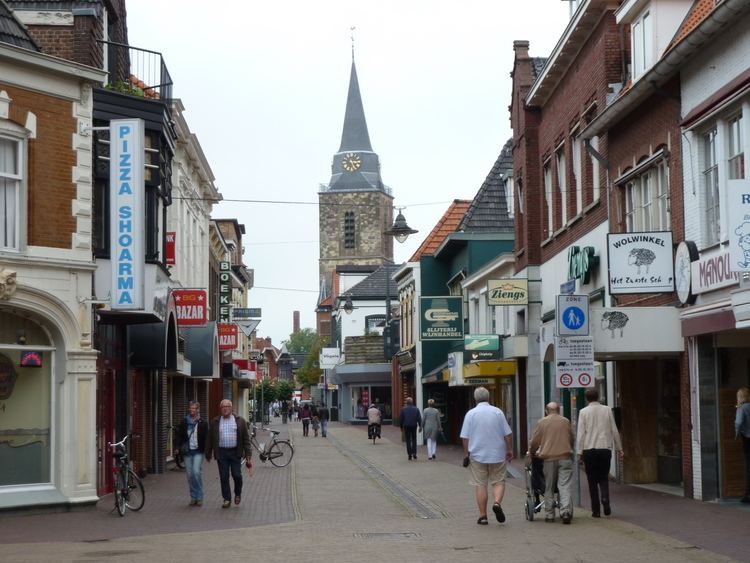Demonym(s) Winterswijker Postcode 7100–7119 Area 138.8 km² Local time Tuesday 5:00 PM | Elevation 37 m (121 ft) Time zone CET (UTC+1) Website www.winterswijk.nl Area code 0543 | |
 | ||
Weather 16°C, Wind N at 11 km/h, 41% Humidity Points of interest Museum Villa Mon, Jacobskerk, De Bataaf | ||
Winterswijk ( pronunciation ) (also known as Winterswiek or Wenters) is a municipality and a town in the eastern Netherlands. It has a population of 28,932 and is situated in the Achterhoek, which lies in the easternmost part of the province of Gelderland in the Netherlands.
Contents
- Map of Winterswijk Netherlands
- History
- World War II Liberation
- Notable residents
- Railway stations
- References
Map of Winterswijk, Netherlands
It was also known as Winethereswick, Winriswic or Wenterswic; the Anglo Saxon wich or wic means the living place of a certain person. The person would likely have been called Wenether, Winitar or Winter.
History
Founded around 1000 AD it remained an isolated farming community until 1830 when the road from Borken to Zutphen via Winterswijk and Groenlo was built. Around 1840 many emigrated to America — Michigan in particular. After 1870 the town became a centre for textiles, such as spinning and weaving and indeed the Tricot fabriek employed a large proportion of the local population in its heyday. In 1878 the railway line to Zutphen was built primarily for the textile industry, which was set up by Jan Willink. Some of the families such as the Willinks have lived there since 1284.
World War II Liberation
31 March, 1945 was the liberation day for Winterswijk during World War II. Before the city was liberated, there was a tank battle on the 30th of March in one of the townships called Woold, with sixty Sherman tanks. The 53rd Welsh Division and the 3rd British Infantry Division, were moving from Bocholt via Aalten to Winterswijk. The tank battle resulted in sixteen German and nine British soldiers losing their lives. On 31 March, 1945 (Good Friday) around nine o'clock in the evening allied forces had a struggle just over five km south of Winterswijk. On 31 March the first allied troops finally reached the Slingestream near Winterswijk. 31 March is marked as the official day to remember the liberation of Winterswijk, despite the fact that in the late afternoon of 31 March parts of Miste and Woold were already liberated. After the liberation of Winterswijk they founded a Rest-Centre for British soldiers in the Sociëteit de Eendracht (Zonnebrink), where the British soldiers, who came from the front, could find some rest. The British front was moving in April 1945, in the northwest of Germany.
